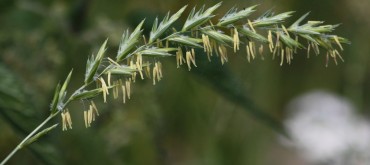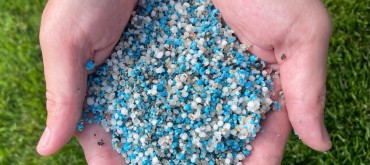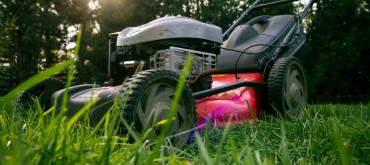As we begin approaching the cooler temperatures of Fall, we wanted to take a moment to provide you with some insight into some particular insects you may have noticed flying around your lawn known as Crane flies. We understand that sighting insects can raise many questions and concerns, so we’d like to provide you with some valuable information to help you better understand their presence and how it may affect your lawn’s overall health and appearance!
Crane flies are insects that are often mistaken for large mosquitoes. Their adult stage can measure between 1.5 to 2.5 centimeters in length, with a grayish-brown body. It’s essential to note that adult Crane flies do not bite and are not damaging to your lawn. However, it’s their larvae, commonly referred to as “leatherjackets,” that can pose a threat.
Leatherjackets are grayish-brown in color and can range in size from 0.5 to 4 centimeters at maturity. In large quantities, they can cause significant damage to your lawn by chewing the grass down to bare soil. Damage typically manifests as yellow spots or bare patches, most visible from May to June. Additionally, secondary damage may occur from skunks digging for leather jackets or birds pecking at them. It is important to note they are more prevalent in the Spring, but they can occasionally appear in the Fall. They can be challenging to spot unless it rains, in which case they may emerge from the soil, similar to earthworms. Fortunately, areas affected by leather jackets often grow back, and the grass will attempt to regenerate from its roots. Crane flies and their larvae have also not been a significant turf concern for the past 5-6 years.
For lawns recovering from damage caused by leatherjackets, overseeding can help introduce new growth to affected areas. Aeration is also beneficial for areas affected by crane fly larvae, as it strengthens the root system by exposing the soil to more nutrients, water, and oxygen. This will provide the lawn with a stronger ability to regenerate after the fact.
There is no particular way to prevent Crane flies or their larvae, however, it is best to build up your lawn defense with regular fertilization, proper mowing, and accurate irrigation. Watering deeply but less frequently, with one inch of water once a week between 4 a.m. to 7 a.m., encourages deeper grassroots and quick recovery from insect feeding. Avoid cutting more than 1/3 of the grass blade at any time to prevent shocking the grass plant (which means cut frequently!). Keeping your lawn at around 3 inches in length will ensure that your grass does not deplete its food reserves, which can affect its recovery rate.
We hope this information provides you with a better understanding of some recent Crane fly activity you may have noticed, and how to safeguard your lawn. If you have any specific concerns or require further assistance, please don’t hesitate to reach out to us. Our team is here to support you in maintaining a vibrant and healthy lawn.





